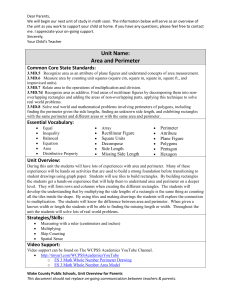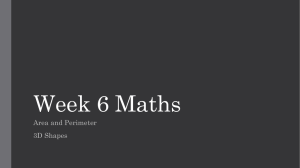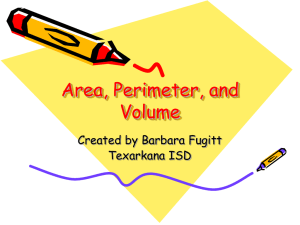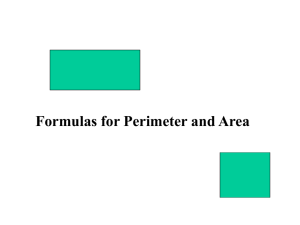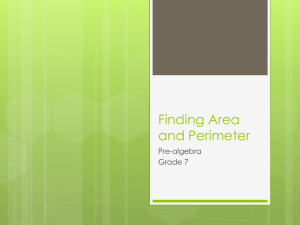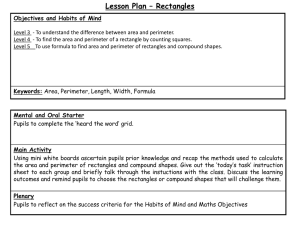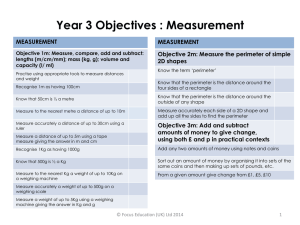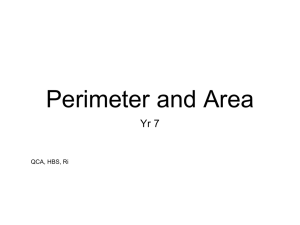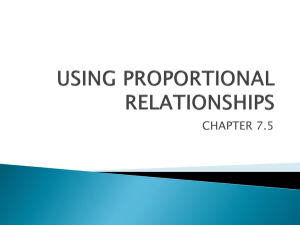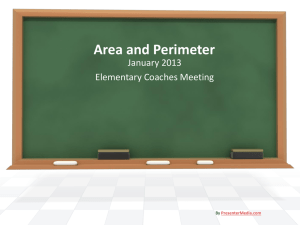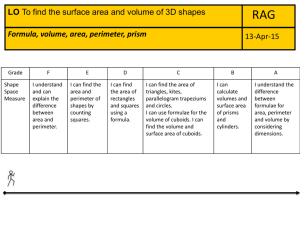Standards Unit N6: Developing Proportional
advertisement
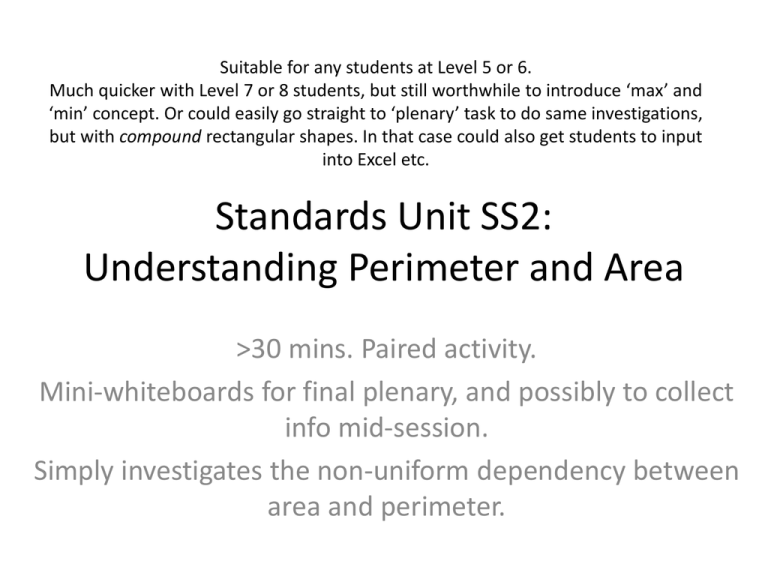
Suitable for any students at Level 5 or 6. Much quicker with Level 7 or 8 students, but still worthwhile to introduce ‘max’ and ‘min’ concept. Or could easily go straight to ‘plenary’ task to do same investigations, but with compound rectangular shapes. In that case could also get students to input into Excel etc. Standards Unit SS2: Understanding Perimeter and Area >30 mins. Paired activity. Mini-whiteboards for final plenary, and possibly to collect info mid-session. Simply investigates the non-uniform dependency between area and perimeter. Consumable Resources Needed: Several sheets of centimetre squared paper Pencil and ruler Re-usable Resources Needed: Mini-whiteboards 1 calculator / pair Notes to start. Perimeters and Areas 6 6 Think of a square 6 × 6 bar where each piece is 1cm by 1cm. What is meant by the perimeter and area of the bar? What is its perimeter? What is its area? In this lesson we will study area and perimeter in more detail. If the area goes up, does the perimeter always increase too? If the perimeter of a shape increases, does the area go up too? Pair Activity 1 Use squared paper to draw the different rectangles. 4 6 9 6 Perim = 24cm Perim = ? Re-arrange the chocolate squares to make different shaped rectangles. But always keep the same number of squares. Work out the perimeter of each rectangle, and find which rectangle has the: i) largest perimeter ii) smallest perimeter Which bar would you prefer? Why?! How many different shaped bars of chocolate did you find? What were their sizes? Height × Length Perimeter 6×6 24cm 4×9 26cm 3 × 12 30cm 2 × 18 40cm 1 × 36 74cm What about if we could create rectangular bars but without being whole numbers of centimetres? Could we make the perimeter even larger, or smaller? See: SS2_PerimeterArea.xlxs Tab 1 Use squared paper to draw the different rectangles. Pair Activity 2 14 13 6 7 Perim = 40cm Area = 40cm2 Perim = 40cm Area = ? cm2 Again, re-arrange the chocolate squares to make different shaped rectangles. But this time the PERIMETER must remain the same. Work out the AREA of each of your rectangles, and find which rectangle has the: i) largest area ii) smallest area Height × Width Perimeter (cm) Area (cm2) 3 × 17 2(3+17)= 40 51 4 × 16 2(4+16)= 40 64 5 × 15 2(5+15)= 40 75 6 × 14 2(6+14)= 40 84 7 × 13 2(7+13)= 40 91 8 × 12 2(8+12)= 40 96 9 × 11 2(9+11)= 40 99 10 × 10 2(10+10)= 40 100 Could we make the area even larger, or smaller? See: SS2_PerimeterArea.xlxs Tab 2 Mini-Whiteboard Questions Draw a rectangle with: 1. An area of 50cm2 2. An area of 50cm2 and a perimeter of 45cm 3. A perimeter of 40cm 4. A perimeter of 40cm and an area of 75cm2 Extension investigation: Repeat previous investigations but allowing compound rectangles
